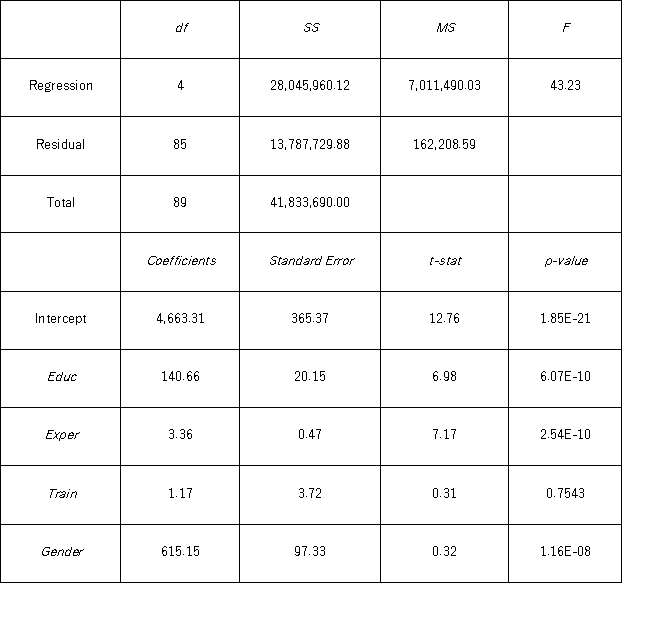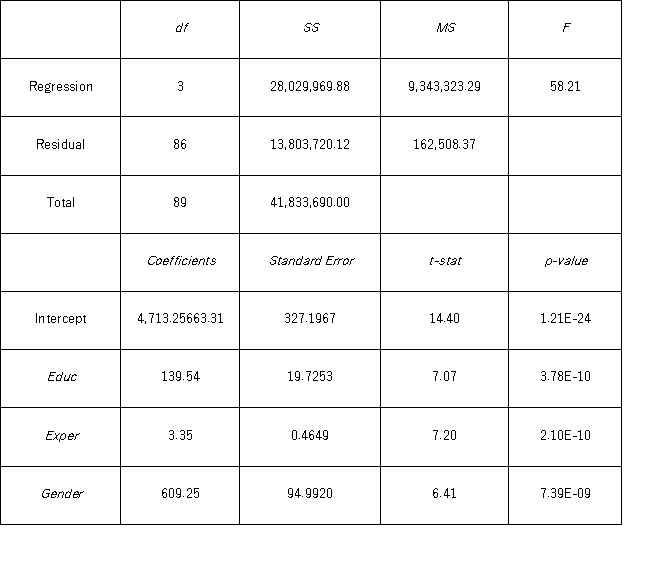Multiple Choice
To examine the differences between salaries of male and female middle managers of a large bank,90 individuals were randomly selected,and two models were created with the following variables considered: Salary = the monthly salary (excluding fringe benefits and bonuses) ,
Educ = the number of years of education,
Exper = the number of months of experience,
Train = the number of weeks of training,
Gender = the gender of an individual;1 for males,and 0 for females.
Excel partial outputs corresponding to these models are available and shown below.
Model A: Salary = β0 + β1 Educ + β2 Exper + β3 Train + β4 Gender + ε  Model B: Salary = β0 + β1 Educ + β2 Exper + β3 Gender + ε
Model B: Salary = β0 + β1 Educ + β2 Exper + β3 Gender + ε  Under the assumption of the same years of education and months of experience,what is the null hypothesis for testing whether the mean salary of males is greater than the mean salary of females using Model B?
Under the assumption of the same years of education and months of experience,what is the null hypothesis for testing whether the mean salary of males is greater than the mean salary of females using Model B?
A) H0: β3 ≤ 0
B) H0: β3 ≥ 0
C) H0: β3> 0
D) H0: β3 = 0
Correct Answer:

Verified
Correct Answer:
Verified
Q51: The number of dummy variables representing a
Q55: Like any other university,Seton Hall University uses
Q56: To examine the differences between salaries of
Q57: A medical researcher is interested in assessing
Q58: A bank manager is interested in assigning
Q60: A gender is an example of _
Q61: A medical researcher is interested in assessing
Q63: To examine the differences between salaries of
Q64: For the logistic model,the predicted values of
Q69: For the model y = β<sub>0 </sub>+